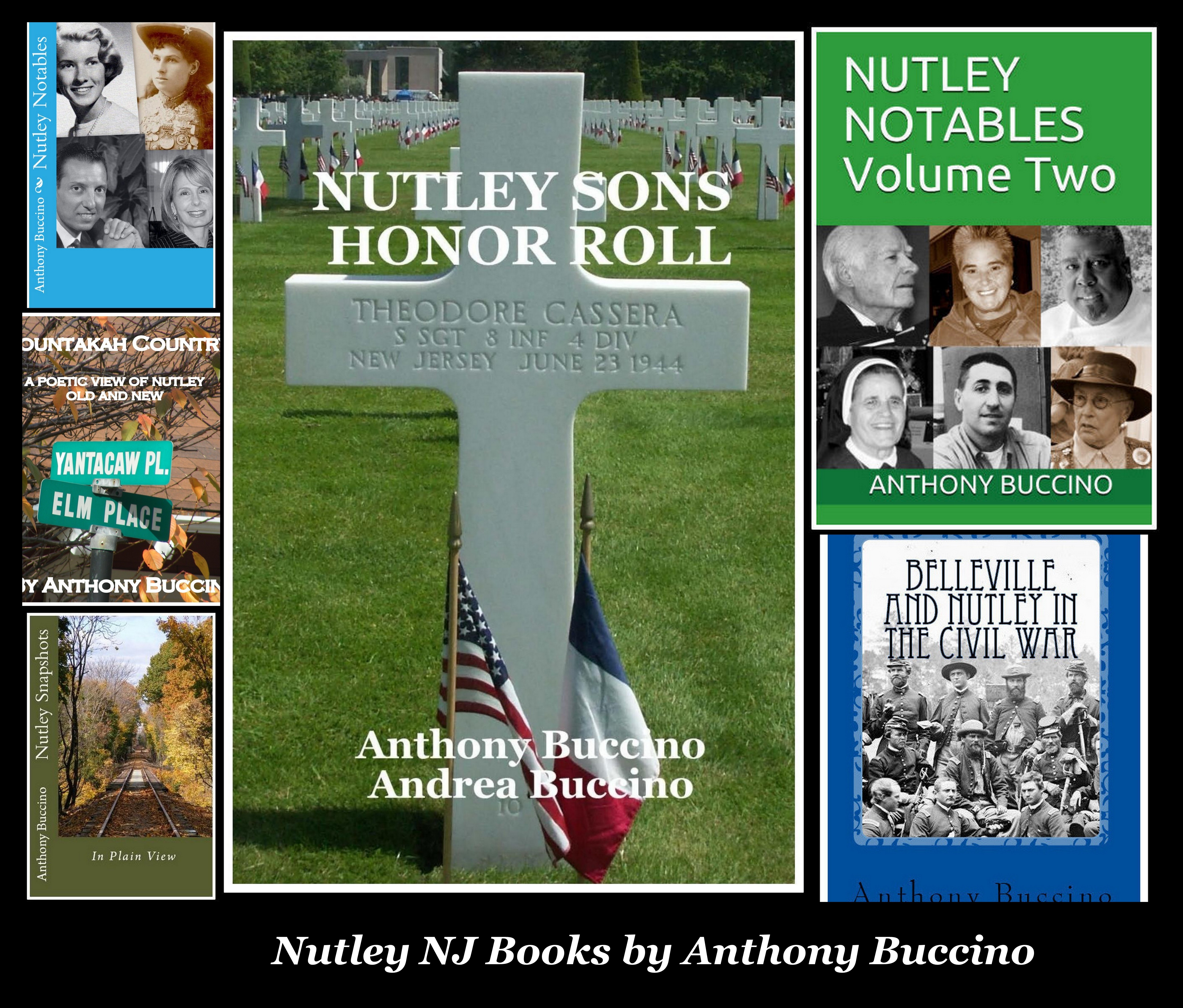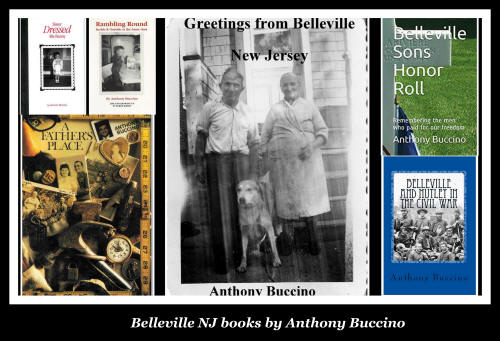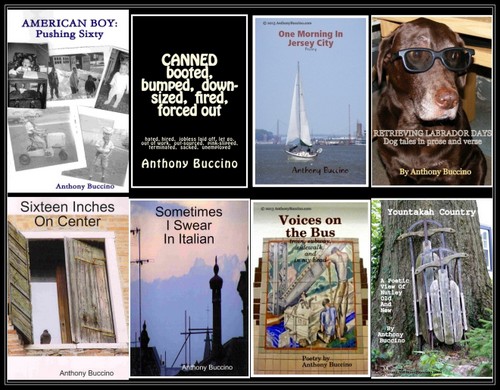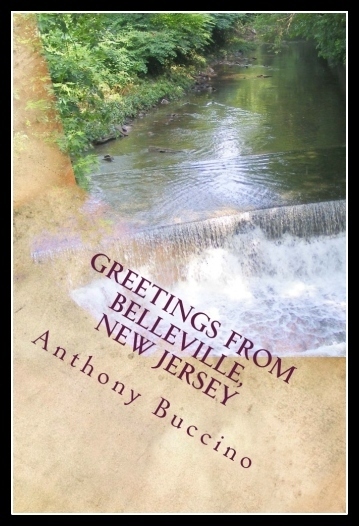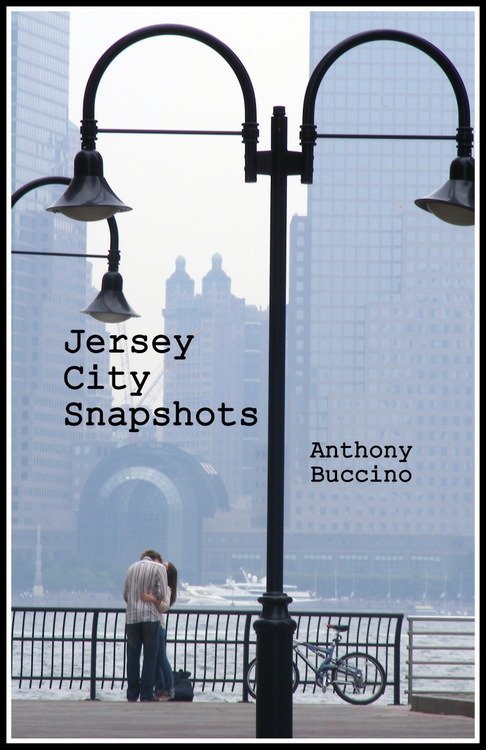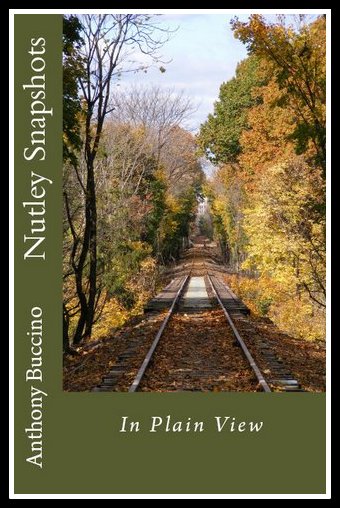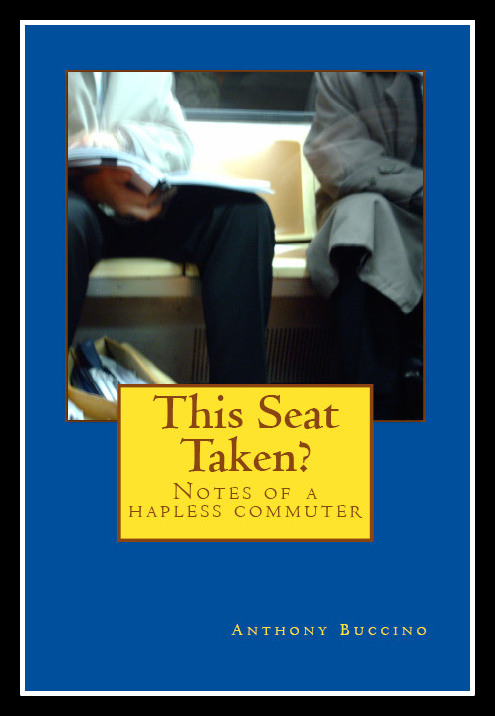|
24 hours in Summit, New Jersey By Anthony Buccino Nightfall at the Promenade, the waterfall is calming, soothing, rushing, and the alley way is secluded in shadows. Ambient lighting is perfect to entice a couple into discovering a private kissing corner. They whirl in second thoughts upon noticing this casual observer. |
|
|
On Maple Street in Summit, New Jersey, on a humid night waiting for the rain, we hear the train whistle at the end of the block and the clanging bell before the train chugs on its way into the evening. A moment or two later we hear the flip flop of a man in flip-flops heading home. At the other end of the block a woman’s voice echoes in the quiet canyon of two-story buildings. She is heading towards the train sounds, and wafting intermingling aromas of many nearby restaurants. Her outside voice carries mumbled words to the dimmed shop windows.
Above the second story of a retail store, on one rooftop a lone TV antenna surprises you in this upscale downtown. That building bears the nearly invisible dark letters BPOE 1246 against a dark wall, and sports three flags, each about the size you’d find on the ordinary house in an ordinary neighborhood. Two are U.S. flags and the center one is the black flag with white letters POW/MIA. Though the town has done well and moved forward, the Elks remember. The city sees itself as an old town with character. Summit’s governing board believes “its historic buildings, structures and streetscapes are an intrinsic part of the value of community.” The Summit Downtown Historic District comprises a 16-block area of distinctive commercial buildings dating from the 19th and 20th centuries. SUMMIT RAIL STATION and Restaurant Row Transportation is a cinch in Summit, with many locals commuting on the NJ Transit trains to New York City. At Railroad Avenue, the train depot, and Franklin Place greet weary travelers with a plethora of dining options. Rich and his wife Eileen, from nearby New Providence, recommend Anna’s Ristorante for Italian fare. They have a gluten free menu. Their long-time favorite, the Beacon Tavern closed about ten years ago. Rich also recommends Fiorino Ristorante on Maple Street. If you don’t mind a drive, they suggested Marco Polo Restaurant & Tavern or La Focaccia, both on Morris Avenue. It’s a ways away from the train station, but worth the trip. Rich and Eileen noted how tough it is to get an on-street parking place near the train station, but the Tier Garage is located a short walk away off Maple Street. Parking is free after 6 p.m. SUMMIT PROMENADE At the corner of Maple Street and Springfield Avenue you can look to one end and see a gentle mix of old preserved buildings alongside modern structures so much younger in a quaint picture of how an ideal city’s downtown shopping district should appear. In the opposite direction you’ll see the three-story Summit Opera House built in 1893. A few storefronts in that same direction you’ll find the Summit Promenade. Built in 1972, in the footprint of what was once a storefront like its three-story neighbors. The promenade, tucked in the hollow of a former building’s footprint, is off the main street. You’ll find respite in the rushing, cleansing whooshing of a 12-foot high man-made concrete waterfall. Four sets of metal tables and chairs are placed strategically in the small square between the brick wall of one building and the storefront of the Mondo building. If you sit at the table alone with your thoughts or chatting with a friend, the rushing water nearby washes away the rest of the world.
Local artist Jay Lagemann’s Speedo is a modern sculpture of painted steel in the form of rider on a racing bicycle. It gives you something to look at while you collect your thoughts in this oasis of planters and lush green plants. Near the plaque describing the promenade, the stainless steel water fountain has three levels. Adult level at average height, mid-level for the little kids and nearly street level for frolicking Fido. At nightfall, the water is calming, soothing, rushing and the alley way is secluded in shadows. Ambient lighting is perfect to entice a couple into discovering a private kissing corner. They whirl in second thoughts upon noticing this casual observer.
SUMMIT OPERA HOUSE On the northwest corner of Springfield Avenue and Kent Place Boulevard, the historic Summit Opera House sings out to history lovers. The 120-plus year old building was renovated in 1985. The grand building to this day houses shops and offices at ground level. According to Jacobs Enterprises, the building has seven apartments and three office/retail units. Walking towards the old building, you see its grand past and useful present. The latter is on display as sidewalk diners enjoy food at Winberie’s Restaurant and Bar. General Manager Jim Owens says their top-sellers are the pita chips with artichoke appetizer, and the chicken Marsala. He attributes their popularity to the fact that they make everything fresh on site. Winberie’s is the third restaurant to operate at this location in 95 years, according to a weathered plaque on the south side of the building. First came The Blue Lantern Tea Room from 1920 to 1948, then The New Hampshire House from 1948 to 1985, and then J.B. Winberie, now known as Winberie’s. The opera house was designed in 1893 for the Women’s Christian Temperance Union as a “dry entertainment hall” by architect Theodore Mead Jr., in return for title to the property. The building is also known as the Van Cise Building, according to Robert A. Hageman, writing for the Summit Historical Society. Civil War veteran Joel G. Van Cise completed construction in 1894. Van Cise later used the venue as a rostrum when he ran for U.S. president on the Prohibition Party Ticket. An 800-seat stage hall featured vaudeville and later became the town’s first movie house. The rear section contained a coffee shop, reading rooms and the WCTU meeting hall, and “resort-quality” sleeping rooms. The basement was home to 60-foot bowling alleys. If you look closely at the memorial plaque, you’ll find the structure’s other names: Its two main halls were Temperance Hall & Union Hall (1893); they were renamed Willard Hall and Howard Hall (1894); the Van Cise Building, and later the Summit Opera House. In 1920, the Overlook Masonic Lodge No. 163 bought the Van Cise Building, and renamed Howard Hall, the 800-seat home of moving pictures, the Masonic Hall. They created a third floor out of the balcony and created an Italian Renaissance meeting room. In 1962, Hughes M. Ryder bought the building. In 1969, he converted the second floor into a banquet hall, and in 1973, converted the third floor into the Craig Theatre.
Present day Summit has about 21,000 residents living in about six square miles on land purchased in October 1664. Settlers arrived about 1710, and nearly 300 people lived here when the railroad arrived in 1837. The railroad and the 35-mile commute to Metropolis has helped the town grow. At the end of the day, commuters debark at aptly named Railroad Avenue it’s a short walk to an elegant meal or something lighter at the one of the many cafes dotted throughout their precious historic district. It’s a good place to come home, or visit and discover many more historic treasures in plain sight. 24 hours in Summit, New Jersey Reeves-Reed Arboretum, Summit, New Jersey More Summit, NJ, Photos by Anthony Buccino Thanking the Glaciers, at Reeves-Reed Arboretum |
Anthony Buccino
Essays, photography, military history, moreNew Jersey author Anthony Buccino's stories of the 1960s, transit coverage and other writings earned four Society of Professional Journalists Excellence in Journalism awards. Permissions & other snail mail: PO Box 110252 Nutley NJ 07110 Follow Anthony Buccino
This Seat Taken? resqme Emergency Keychain Car Escape Tool, 2-in-1 Seatbelt Cutter and Window Breaker Lifehammer Safety Hammer - Emergency Escape and Rescue Tool with Seatbelt Cutter
Shop Amazon Most Wished For Items
Support this site when you buy through our Amazon link.
|
Shop Amazon Most Wished For Items
Support this site when you buy through our Amazon link. |
|







